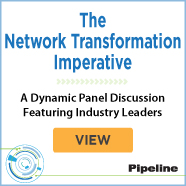Telecom & IT Technology Industry News
Agents, Optics, and the Quantum Edge
Vertical AI Agents & Operational Automation
Cisco unveiled AI-powered Webex Contact Center, agentic capabilities in AI Assistant and RoomOS, and the 8223 router for AI data centers. ServiceNow unified conversational AI with governance and accelerated AI with NVIDIA in UK data centers. UiPath partnered with Snowflake for agent automation with Cortex AI.
The explosion of agentic systems—from web transactions to supply chain orchestration—marks the arrival of AI as infrastructure, not just software. Enterprises will delegate a large share of routine decisions to autonomous agents, significantly reducing operational costs and accelerating time-to-market. But this power shift demands new governance frameworks; without them, agent misalignment could trigger cascading failures across global systems. The winners will be those who build trust into autonomy, turning AI agents into profit engines rather than liability risks.
Cloud News
Cloud modernization and multicloud strategies emphasized sovereignty and telco acceleration. Spirent added benchmarking to cloud-native 5G SA testing with Landslide. Finout integrated multicloud visibility into Oracle Cloud Marketplace. Zenlayer launched distributed inference for global AI workloads. Ericsson upgraded e& UAE and Egypt networks with cloud-native 5G cores. The U.S. Air Force deployed Oracle Fusion Cloud for business optimization.
Cloud is fragmenting into sovereign silos, with multicloud credits standardizing portability. Telco clouds will host most edge AI, but quantum threats will force post-quantum migrations, creating hybrid public-private fabrics for resilient global compute. Enterprises gain significant flexibility—moving workloads in minutes, not months—but must master data gravity and compliance choreography. Cloud spend will shift from capacity to outcome-based pricing, rewarding platforms that deliver verifiable business impact over raw compute power.
Innovation News
Quantum & Post-Quantum Innovation
Aliro Quantum supported dozens of devices in entanglement networks. IonQ acquired Vector Atomic for atomic clocks and sensors, advanced quantum chemistry simulations to combat climate change, and joined Italy’s Q-Alliance. D-Wave hosted Advantage quantum tours at USC ISI. Patero and Calibr8 Systems allied for post-quantum migration in ANZ.
IoT, Sensing & Space Connectivity
DOCOMO and PaMeLa developed brainwave technology to share personalized pain perception. Omdia forecasted massive enterprise LEO spend by 2030, nearly all for broadband.
Quantum networks are moving from lab to field, promising unhackable comms and perfect synchronization. LEO constellations will blanket Earth with IoT connectivity, enabling real-time climate modeling and remote surgery. Enterprises will gain planetary-scale sensing, but a significant opportunity hinges on open standards—otherwise, quantum silos will fragment the very fabric they aim to secure.
Market News
Market activity featured mergers, leadership shifts, and strategic partnerships. NEC partnered with HID to enhance biometric identity solutions. NEC deployed HPE Juniper AI networking for Ouribank Brazil. Eviden partnered with Vates to deliver open-source virtualization for EU infrastructure. Verizon will exclusively offer Meta’s Ray-Ban AI glasses and host GE Vernova’s MDS Orbit for grid modernization. Oracle partnered with Duality for privacy-first AI on OCI and collaborated with SoftBank on sovereign cloud.
HPE validated multi-vendor 5G cores with Ericsson and closed its Juniper Networks acquisition. Firmus Technologies integrated Rafay PaaS into its AI Cloud. Qualcomm deepened agentic AI collaboration with Google Cloud. Beyon Cyber signed an MoU with Haven for Microsoft-partnered global cyber services. 31 Concept acquired Xynthor AI for DPI and data sovereignty.
Snowflake named Stella Low as CCO. HoneyBook acquired Fine.dev’s AI-coding team. CSG extended its Charter Communications contract to 2031. Echelon emerged with seed funding for AI-compressed ServiceNow implementations. Cologix acquired DataHiveOne to enter Calgary. CoreWeave acquired Monolith AI for physics simulations.
M&A and strategic alliances are consolidating the AI-native stack—from silicon to sovereign cloud. Incumbents are absorbing startups to close capability gaps, while leadership shifts signal a maturing market. For enterprises, this means fewer vendors but deeper integration risk. The real value emerges in “AI plumbing” platforms that predict, prescribe, and prevent—turning observability into a profit center and making operational resilience the new competitive moat.
Overall, October foreshadows a future where agentic infrastructures self-evolve, blending quantum-secured optics with LEO meshes for ubiquitous intelligence. Oracle and NVIDIA lead in scale, but rural connectivity gains demand policy attention. The pipeline is no longer just flowing—it is thinking, trading, and reshaping tomorrow.
----------
To read more telecom industry news stories, be sure to visit Pipeline’s News Center and subscribe to Pipeline’s weekly and monthly newsletters. You can also follow Pipeline on LinkedIn, X (formerly Twitter), or Facebook to get telecom industry news alerts in real time. To have your company's news considered for coverage in this monthly IT and technology industry news column, send your breaking news and press releases to pressreleases@pipelinepub.com.


















